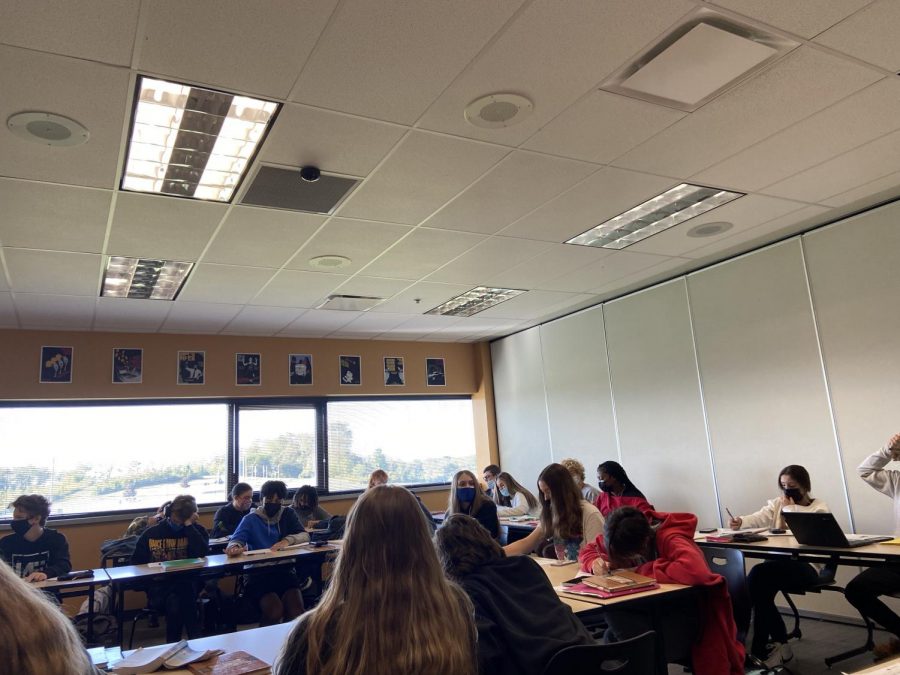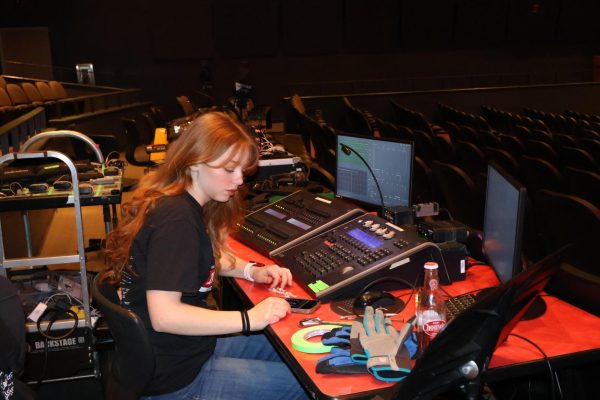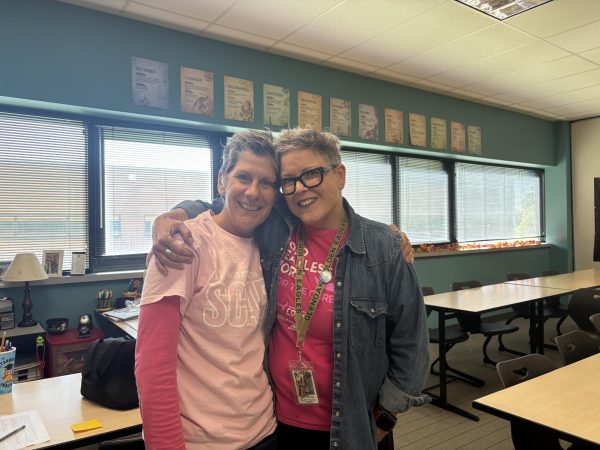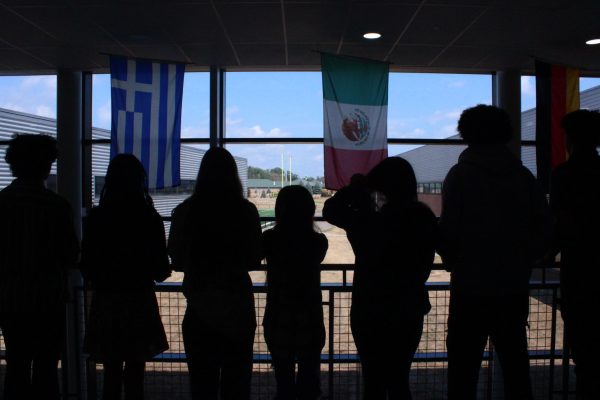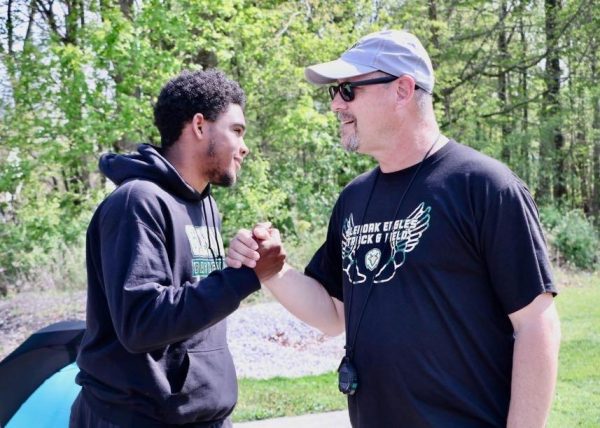Students face bigger class sizes
Students come into school with more peers than previously accustomed to
With the smaller class sizes last year, one did not have to worry about people sitting too close for comfort or the kid sitting near you. Now it is a problem nobody wants to admit to facing this year.
In the 2020-21 school year, GlenOak had to deal with the scheduling of smaller classes to keep the numbers of cases down. This year, however, the number of people per class has gone up, and both students and teachers alike are getting used to it all over again.
One teacher who has a bigger class this year is English teacher Susan Barry. She teaches English II, Honors English II and AP English III.
Barry has had to deal with the class of 2024 which is at a high number of 500 students in all. Even though she does not have to deal with all 500 students, there are still a lot of students to deal with in her three different classes.
With all of the students packed into the classroom, it is harder for Barry to make sure to tend to all of everyones’ needs in the classroom.
“I have to spread myself more, so if I have a student that’s misbehaving, that takes my attention away from helping kids that I should be helping,” Barry said. “Sometimes I’ll move them, so I’ll move them out into the hall and tell them I need to have a talk with them because I don’t have the room to move them to a different spot.”
With bigger class sizes this year, it is harder for teachers to get students’ attention in class with the classic trouble maker that all classes seem to have.
Barry is not the only one who has to deal with heavier classes this year. Another big classroom this year is AP government, which on average should have about 20 people in the classroom, but instead have been split up into a class of 27, and nine.
Matthew Cribbs, the teacher for these AP government classes, has encouraged students to switch over into the smaller class if possible.
“As far as the switch from AP to AP, trying to even out those classes, I was just trying to see if I could get people to volunteer to maybe make it equal, and we got one person to do it,” Cribbs said.
That one person is junior Aleksandra Velickovic, who switched into the smaller class to help Cribbs out.
Switching into the smaller class has it’s pros and cons. A pro for Velickovic is because of the smaller class sizes, you will be able to get more attention whenever you would have a question or need help with a certain part of the subject.
Junior Christina Zuchegno agrees with Velickovic on the subject of smaller classes being a better learning environment.
“It’s easier for the professor to teach more individually and we feel like a family,” Zuchengo said.
The smaller classes are definitely a favorite amongst students, but even a fan favorite has its cons.
“There’s not as many people to meet and talk to and sometimes in group projects you feel like you’re working with the same people every time,” Zuchengo said.
These certain sized classes, whether big or small, have people that work behind the scenes to make these schedules happen.
Counselors are the main people that work behind the scenes to get the students of GlenOak their full schedule and to get them the classes they need and want.
Guidance Counselor Heather Zapolnikhas revealed the process of getting a student’s schedule set and made:
1) The students put in requests around February
2) Counselors spend the next several weeks reviewing each student’s requests to be sure that students are choosing the correct classes for graduation and doing advising
3) Counselors will manually enter any classes that aren’t available for students to choose in HAC (i.e. AP, IB, CCP, and intervention classes.)
4) Principals take those requests and start to create sections based on needs. They will continue to manipulate the Master schedule for months, trying to maximize the greatest number of students getting their requested courses
5) Students get their schedules and request changes through counselors.
Because of this process, it is difficult to change a student’s courses within the first few months of school because a seat has not been saved for them as it would be for people who originally signed up for those classes.
Some classes run out of open spots quickly, which can make it difficult for students to sign up for those classes that are popular among other students.
“Certain classes like Ceramics and American Sign Language are typically full, but this year, nearly everything is full. There are always general electives that would be open for us to add students to, but this year those classes are full. There is very little room for movement in a student’s schedule,” Zapolnik said.
Because GlenOak now has online students from last year coming back to school, there are more students to schedule and take care of compared to last year.
Taking into account all the teachers, counselors and principals that make the scheduling decisions here at GlenOak, it is a hard talk to make these certain decisions on class sizes.
Your donation will support the student journalists of GlenOak High School. Your contribution will allow us to purchase equipment and cover our annual website hosting costs.
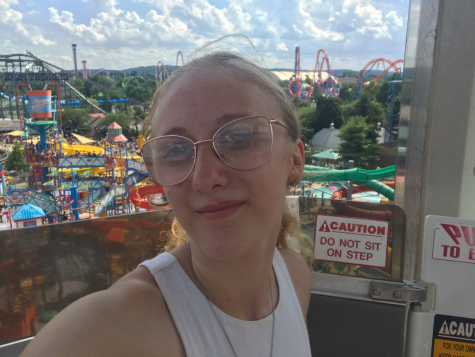
Grace Flock is a senior at GlenOak this year. This will be her third year on staff as a News/Feature editor. Grace is involved in Choir. Outside of school,...

